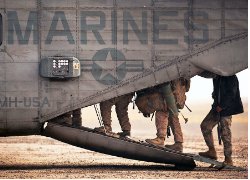
(The Atlantic)
Two years ago the Taliban held large strips of Afghanistan predominately in the southern provinces of Kandahar and Helmand. In response, NATO padded their forces with an additional 33,000 Marines and Army soldiers to combat the Taliban in these areas. The last of these “surge” troops left Afghanistan September 21 after accomplishing their objective of reversing the Taliban momentum in the south and shrinking Taliban strongholds. Now the question is what strategy NATO and the Afghan government will use to combat a more agile and clandestine Taliban.
The landscape left behind by the surge troops is best exemplified by the recent Taliban attack on Fort Bastion – the high profile airbase where the United Kingdom’s Prince Harry is stationed. The attack was perpetrated by 19 Taliban soldiers dressed in U.S. Army uniforms. Two U.S. Marines were killed and six U.S. Marine fighter jets were destroyed, rendering the squadron combat ineffective, a designation that particular squadron has not received since the Marine defense of Wake Island in 1941.
These types of “green on blue” attacks, in which Afghan soldiers work alone or in concert with the Taliban to attack NATO forces, are giving NATO officials pause following the drawdown of troops. NATO had hoped that Afghan forces would be capable of standing in for surge troops by now. Unfortunately, with green on blue attacks on the rise, NATO is instead creating distance between themselves and the Afghan forces. On September 17th, U.S. Army Lieutenant General James Terry, the second highest ranking officer in Afghanistan, announced that NATO troops will no longer patrol alongside their Afghani counterparts as standard practice.
Lieutenant General Terry also announced a new initiative in the way Afghan troops are vetted prior to enlistment as a way of combating these insider attacks. However, this plan comes weeks after statements by Afghan officials regarding their lack of resources for screening new recruits. These officials claim they lack basic items like computers for creating a database of new recruits. This all adds up to a slowdown in training and deploying the troops meant to replace NATO surge forces.
At a time when NATO had been hoping to celebrate a milestone in the development of Afghani independence, they are instead scrambling to formulate strategy and policy. Resources need to be allocated to military recruiters in order to weed out Taliban sympathizers. The vetting process has to take place for all new recruits as well as the 350,000 soldiers already inducted in to the military. Only then will Afghan soldiers be able to take their posts alongside coalition forces, replacing their surge predecessors. And this all has to take place before the Taliban can regain their foothold, rendering the two-year surge useless.
Tom Dunlop is a 2L at Denver University Law and a Staff Editor for the Denver Journal of International Law and Policy.


